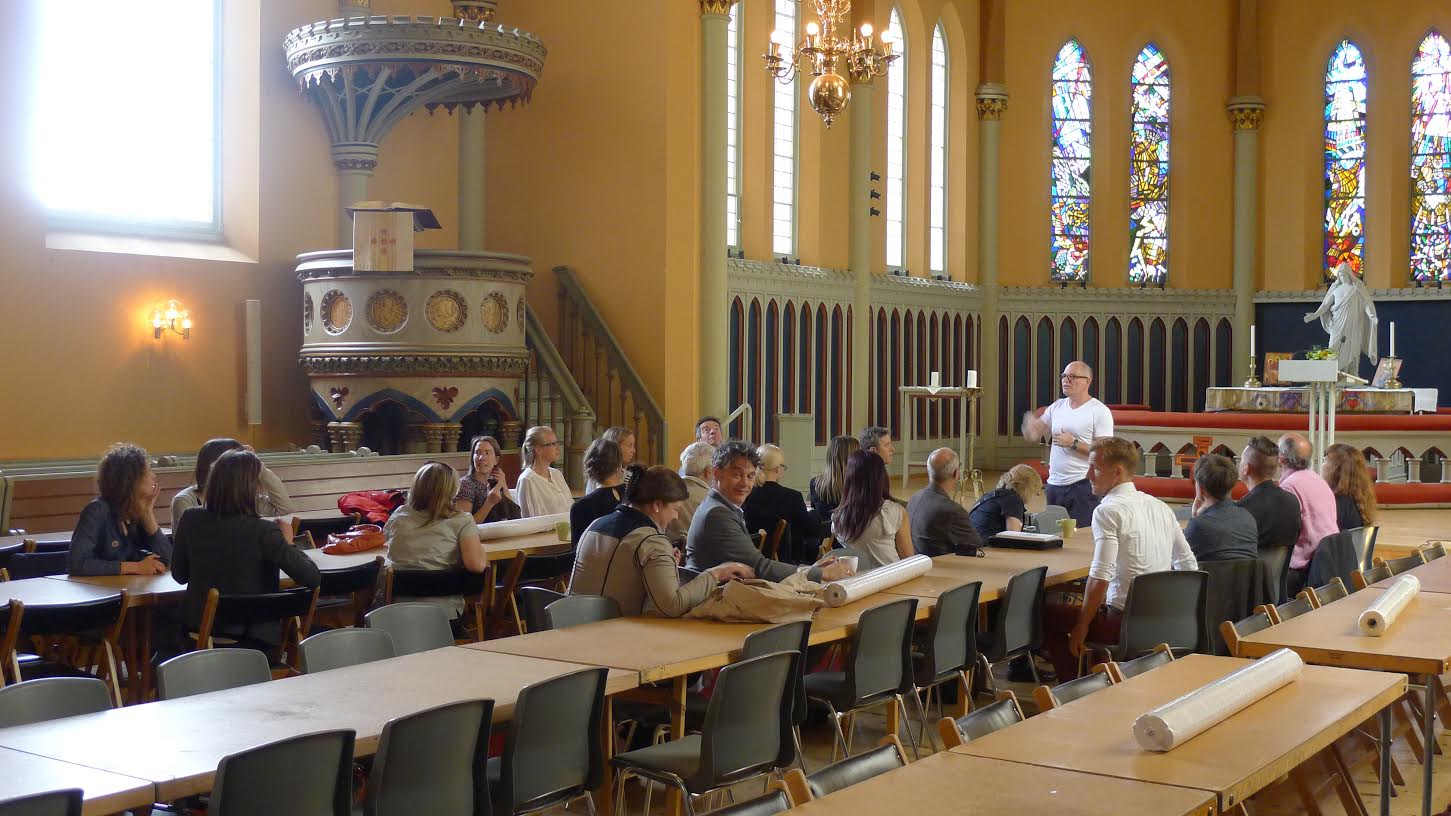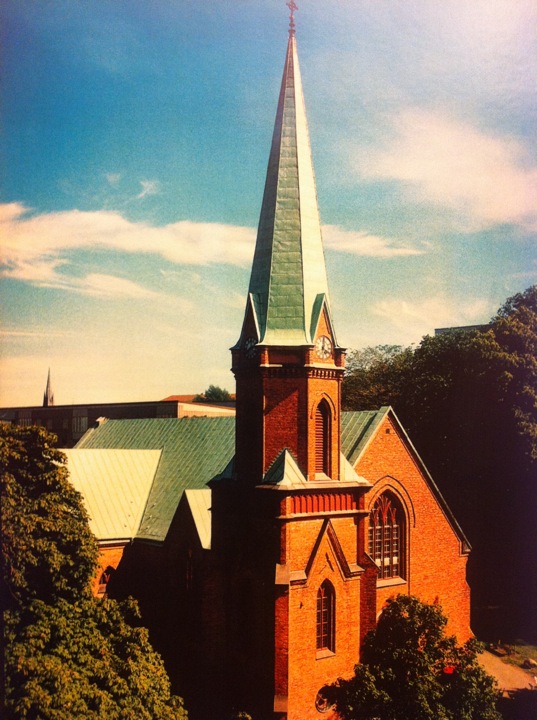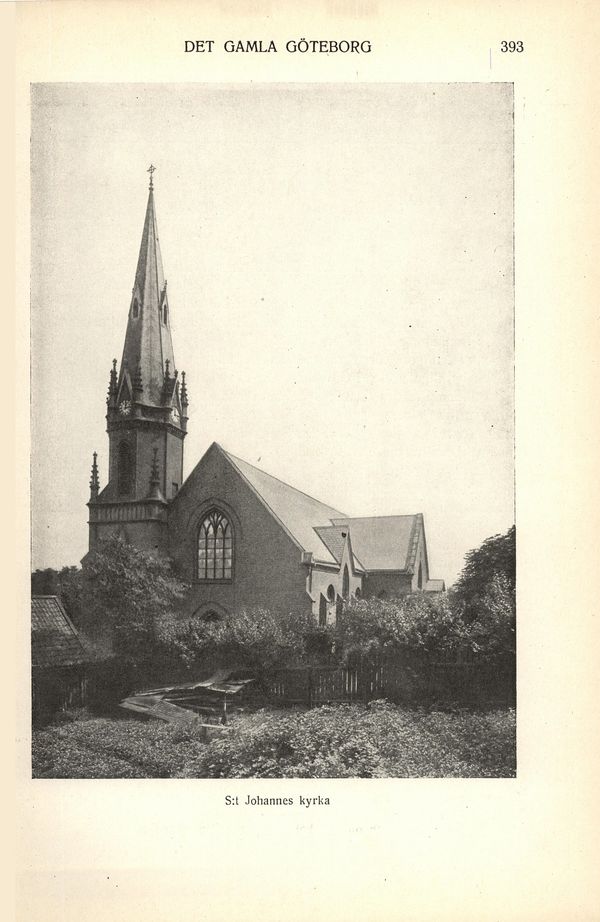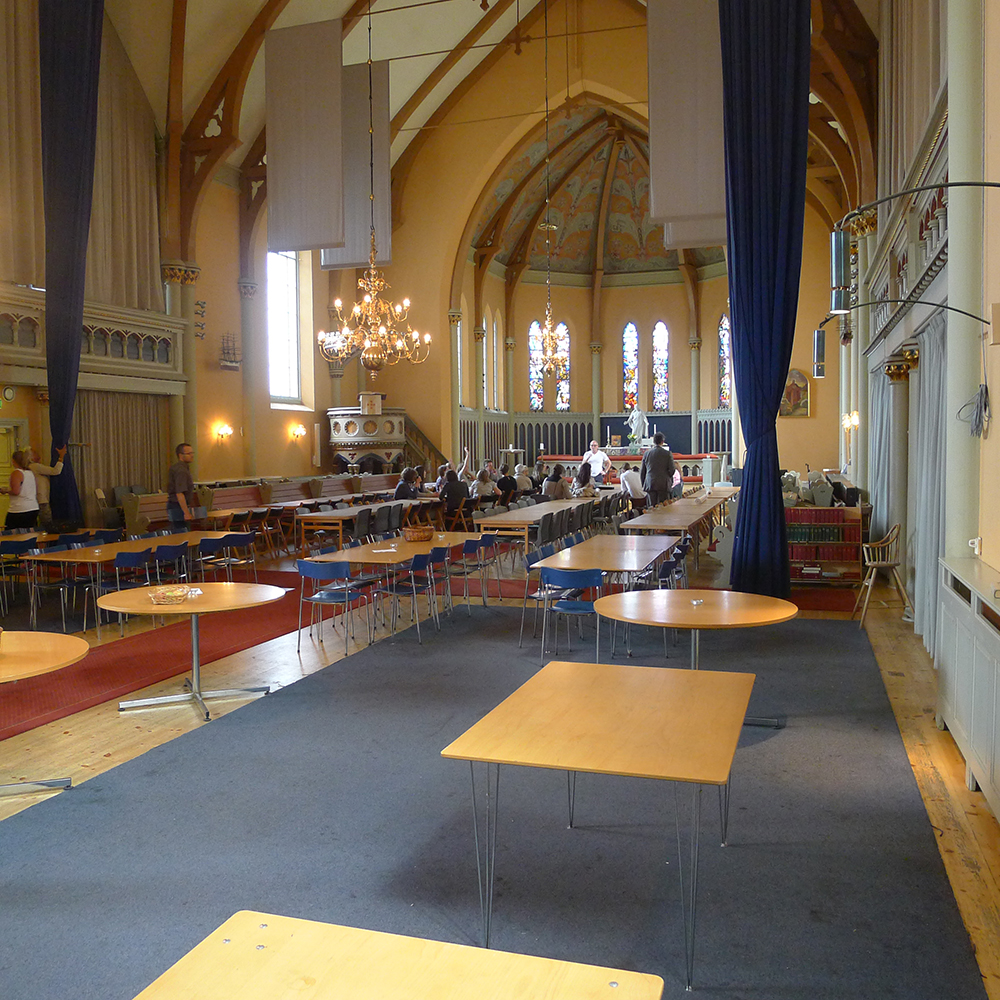Having been empty and deserted for many years, St. John’s Church has become one of Sweden’s most visited churches. Founded in 1866 as a church for the poor, since 1995 it is a community center for the homeless, addicts and mentally disabled people on the streets.

The Johannes church during an ALTERheritage meeting in 2014
St. John’s Church has an interesting history, with which it is still associated, as “a church for the churchless people.” Our society has changed rapidly and in many ways over the past hundred and fifty years. In the time before and during which the church was built, we lived in an agricultural society where ninety percent of the population lived in the countryside. The church was the prevailing institution characterizing people’s daily lives. Based on faith and tradition, we created our values. Undivided villages and multi-generational families were the natural protection that existed. The daily quest for potatoes on the table, i.e. “Food”, was the most important. It was the area of infectious diseases, people died of small wounds, pneumonia and epidemics.

The door of the Johannes church
Today in the twenty-first century, we are going through a shift of the community. We are now moving into an IT-, service- or perhaps a knowledge society. Our current dominant institution is the individual. Our values are about choice, freedom, personal development, individual adjustment. We need to be competent, trained individuals to be able to take care of our interests and make the daily choices that have an impact on our lives. Urbanization is increasing significantly worldwide. Many of us are new citizens in a city that we moved in to. We no longer live alone as nuclear families, rather we live in many different family structures, most of them in one-person households or extended families, etc., or as homeless; all of these forms require adaptation to new situations and often rapid changes. Our aim now is to find “meaning of existence”, to find a context, our identity, that “life sentence”. We long to find our identity, to understand why we are here and who we are. We are now entering the epoch of trust deficiency diseases, by which I mean the increase of all forms of compulsive behaviors, addictions, psychiatric conditions, mental disability, involuntary loneliness, crime, etc.
St John’s Church is a place for us who have experienced that trust deficiency or have felt that we do not fit into society. It is a place where people come together who would otherwise never meet. An eclectic and unusual mix of people. We meet in open conversation where we share our experiences of weakness and vulnerability as well as strength, and come together in groups, in worship and at cafe tables. People that in various ways have tried to find community in different churches or other places but felt that they did not fit into the template of how one should be or that they were not good enough. People who have lived their lives in a downward spiral that usually ends with prison, institution, or premature death. And with that realization, decided to find a new way to live. Seeking a more sustainable lifestyle in fellowship with others who are seeking a power greater than us to break the destructive behaviors and addictions.

Exterior of the Johannes church
St. John’s Church offers a safe community for those who seek such change. Through the trust and love we meet here, we are brave enough to take a leap into a new alien world where spiritual principles such as honesty and patience play a big role in leaving drugs and crime behind. To find a new way in which we dare to let go of our past and surrender ourselves to a process unknown to us, which we call recovery, an upward spiral that is sustainable, a lifestyle where things get better and better. A process we call empowerment.
St. John’s Church wants to be a healing place where reciprocity and participation are more important than control and governance. Here, participants and visitors, as well as employees are role models and good examples for each other rather than parent and child. Equality and human rights are more important than where we come from and what we’ve done in the past, a place where we can start over. Here is a place with cognitive processes for life-long learning.
St. John’s Church is an open space where you can cultivate trust, where you are allowed to be who you were meant to be, where you are allowed to be an individual and not stigmatized by flaws, shortcomings or disease. Here we are not classed as a group or a collective; we are not just addicts, homeless, mentally disabled or poor, etc. Each one is being judged only for his ability to change and find a sustainable lifestyle. We share our secrets in openness, in the light of which they get a new and less dramatic importance and we find new perspectives and ways to manage our lives.
From having been an empty and deserted church for many years, St. John’s Church has become one of Sweden’s most visited churches. It’s a place where thousands of people have made the journey from fear to trust and from powerlessness to empowerment as an exciting life-long process. St John’s Church is a place where people get new lives.
Prehistory
Peter Wieselgren, dean in Gothenburg, had a passion for social justice. He realized what alcohol and poverty did to people. As a young man he wanted to get involved to make people have better living conditions. Wieselgren wrote at the age of nineteen the first known temperance pledges and he is known for his involvement in the temperance movement. But he was also upset and engaged by the fact that people came to the churches, but could not come in and walked away without hearing the words of God, because there were not churches enough for everyone to fit in. And people had to buy a bench in the church to get in. Therefore, the dean went out of the cathedral, and perched from a great tree, from where he preached to the masses, the churchless people.

The Johannes church on an old photo
When Peter Wieselgren celebrated his sixty years birthday, some rich people in town collected money by the initiative of merchant Oscar Ekman to build St. John’s Church where Peter Wieselgren would preach for the churchless. St. John’s Cathedral was completed as a “a church for the churchless” in 1866. At the opening on July 8, Peter Wisselgren held a sermon on the topic of Kings 8: 22-53 and ended his speech with the words: “May the sharp two-edged sword here go through many souls so that the Lord may have to create new people, who can promise and praise Him!” This has been done through the years and is still ongoing. Many have broken the old patterns and destructive behaviors. Thousands of people have come to believe in themselves, their environment, in God and created new lives and opportunities.
Recent history
City Mission in Gothenburg was launched on October 7, 1953 by Isaac Béen and Ebbe Hagard after a petition which drew the attention of the distress that existed in Gothenburg.
City Mission’s work with homeless, addicts and prostitution in the 70’s was much about consolation and easing troubles. We used buses redesigned into mobile cafes with counselors, social workers and deacons among the homeless, addicts and mentally disabled people on the streets troughout the ‘80s and ‘90s. It became increasingly clear that the old way of motivating and supporting active addicts on the streets became instead a way to enhance and enable the old way of life and habits.
We had long seen that people who had a program of recovery in the Twelve Steps were able to find a more sustainable way out of addiction and destructive life patterns. It was shown that such recovery exerted great attraction; those who got a better life exerted a positive influence on their old friends, and there was a reciprocal identification that was previously not as obvious in our work.

Johanneskyrkan, Gothenburg: deserted for years now a shelter and food distribution centre
From 1985 to 1995, the church was almost empty. Since it was no parish church it mostly came to be empty and without activity, therefore it was out for sale.
The ideas of doing something good with this amazing building began to take shape. In August 1995, we were given access to the building and began to unscrew the pews to form room in a new and innovative way. There would be room for meetings and socializing and for community and security. It created a room for cafe tables and one for worship; there were breakout rooms for self-help groups. Other rooms and spaces were turned into offices and conference rooms. A small cooker was set in a corner of the kitchen where we cooked soup and coffee.
We reopened St. John’s Church February 21, 1996 as a “Church for the churchless”. It became a church for those who do not fit in with their families, church or community. Here we could breathe the same air. Here we were able to change and come back to life, community, family and society.
It was an immediate success; many have over the years found a home here, a springboard to a safer and more sustainable lifestyle. Many have found connection and identity, a meaning in life and connection to family, friends and community. They have found hope and faith in a power outside themselves, stronger than them self, a force many of our visitors choose to call God.
When we got access to the St. John’s Church, we were able to develop our work as a street church. We got a place to start from and we took the church out into the street and we took the street into the church. We wanted to be out on the streets to attend various popular events. We wanted to reach those who did not have ecclesiastical habit, and those who felt ‘without church’. People who had no roots or tradition within the church who longed and looked for something that could help them find direction and meaning in life. It was also a way for staff to work from a context in Christian values.
Piet de Boer works for Stadsmissionen.
Piet.deBoer@stadsmissionen.





Follow us: